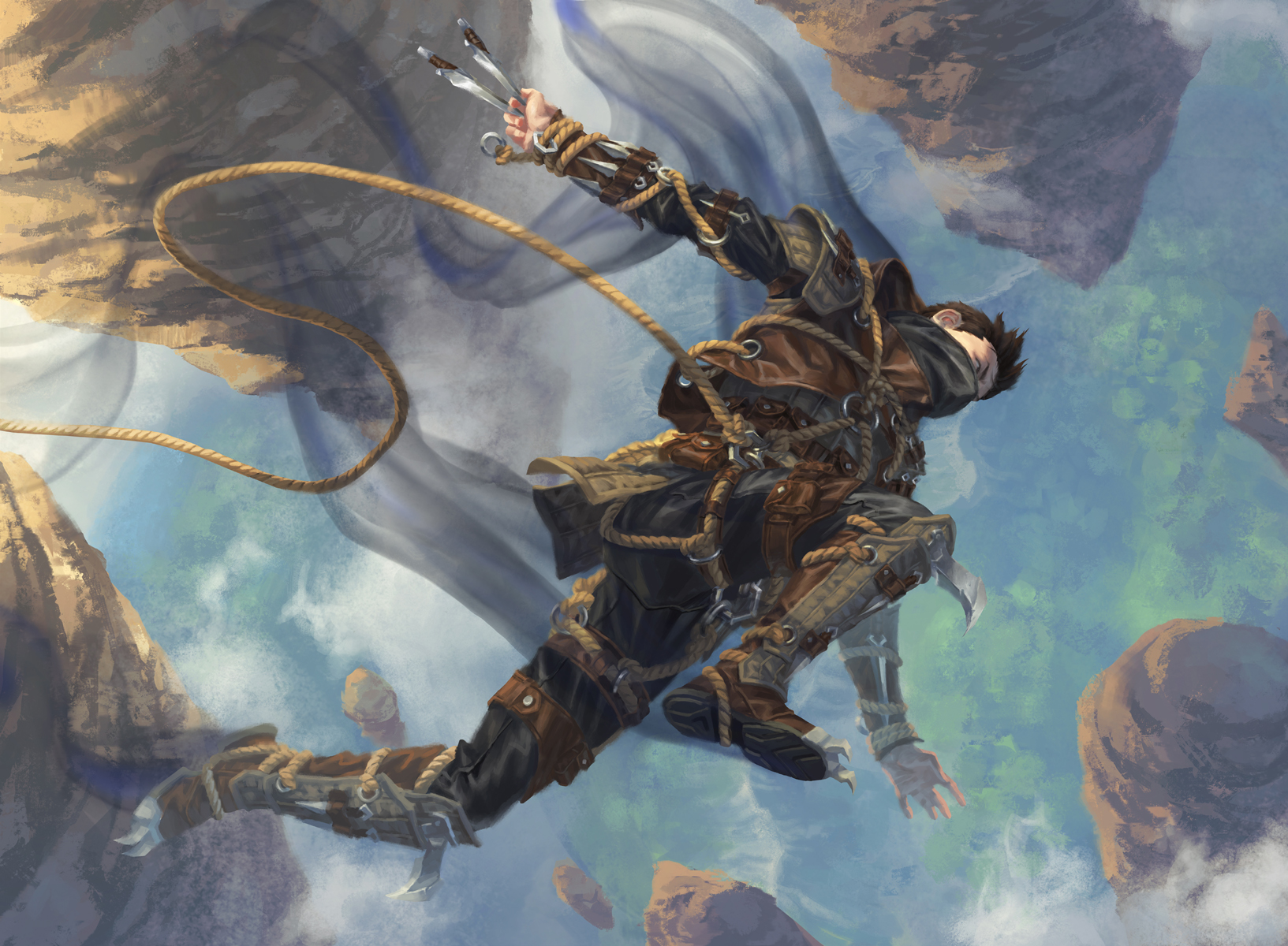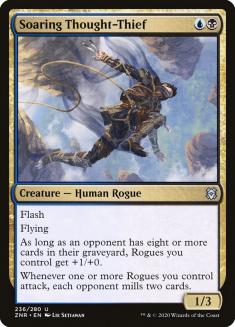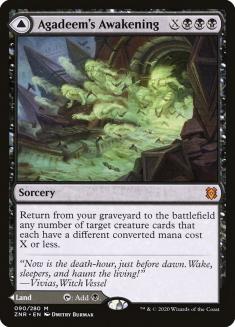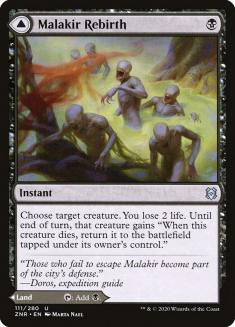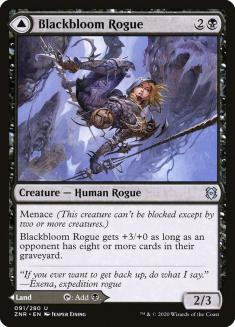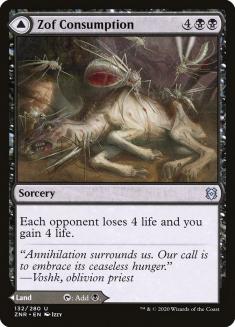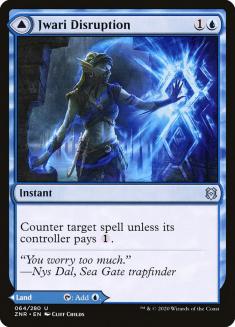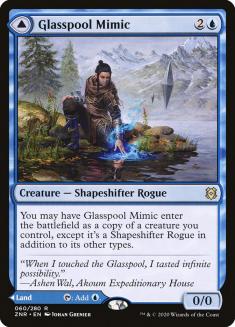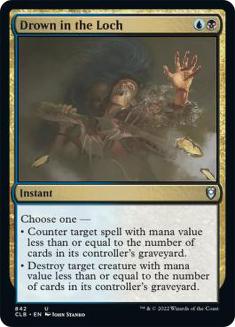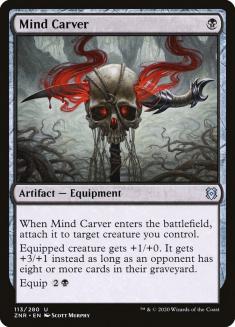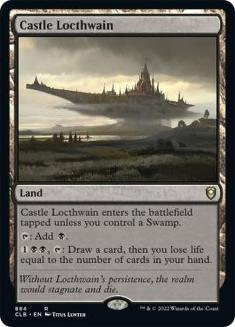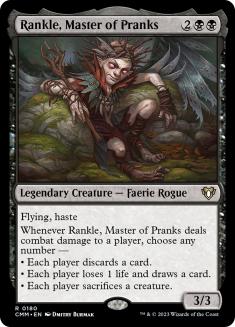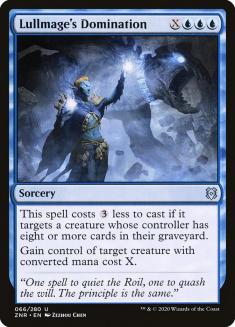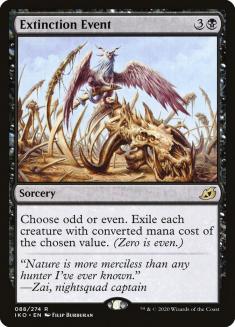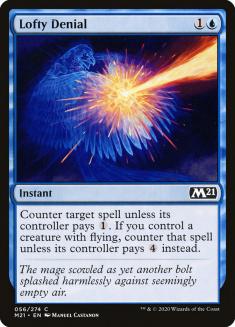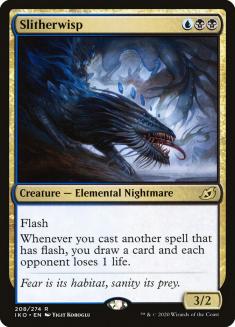Rogues are misunderstood.
It’s easy to understand why. Many of the cards have flash and Dimir tempo decks have traditionally played a “draw-go” game with plenty of counterspells. In an ideal world, I’d love to play that sort of deck but that’s not where we are.
If you asked me how I thought Rogues would get filled out with Zendikar Rising, I would not have guessed “with a lord that rewards you for going wide.” Thankfully, it’s not quite that narrow in nature, so we have some room to maneuver.
The decks I was building desperately needed a solid two-drop and I can’t imagine it getting much better than this.
Creatures (23)
- 4 Brazen Borrower
- 4 Thieves' Guild Enforcer
- 4 Merfolk Windrobber
- 4 Zareth San, the Trickster
- 3 Nighthawk Scavenger
- 4 Soaring Thought-Thief
Lands (23)
Spells (14)

The gameplan is to get your Rogues powered up, maintain a tempo advantage, and win with Mind Carver and flyers or huge swings from Zareth San, the Trickster. Brazen Borrower, Bloodchief’s Thirst, and Drown in the Loch serve as your disruption.
There are also some modal double-faced cards (DFCs) that help maintain your position. Midrange-leaning aggro decks got a huge boost with the DFCs. They make it very difficult to flood out in the late-game and ensure you can hit your land drops and curve out effectively.
Here are the modal DFCs I’d consider for Rogues:
As a late-game rebuild, you could do much worse than Agadeem’s Awakening, especially since it can also double as a mana source. Casting it for two isn’t great for power and mana efficiency. At three, you get your mana’s worth and huge card advantage, which should be enough to close out the game.
Malakir’s Rebirth isn’t exactly Dive Down but it’s close. The fact that it’s also a land further increases its worth. If you’re playing high-value targets like Nighthawk Scavenger, the card gets even better.
I had to think about this one. A 2/3 menace isn’t a great statline, but once it’s powered up, it’s actually not that bad. I still prefer either the trick or the end-game card but Blackbloom Rogue isn’t a terrible option.
In a more aggressive version, I could see this as a potential finisher. It seems like Rogues will mostly be built on trying to get a tempo advantage and keeping it rather than trying to chip-damage their opponents to death. In something like Mono-Black Aggro, Zof Consumption looks great.
“It’s a counterspell early and a land late-game. It’s perfect!”
No, no it’s not.
If your opponent plays around it, your card you were previously relying on trading with your opponent is a useless land. Ideally, you have something you can play as a land early or be a relevant spell in the mid-game or later.
I’m sure people will play this card and it will probably be in successful decks but they’ll eventually cut it.
Maybe if we had creatures that were powerful.
When you choose to play a DFC, you’re choosing to give away some sort of information. Whether or not your opponent can utilize that information is going to vary game-to-game but it’s still something to be aware of. Some situations are going to be more awkward than others, such as having to play Malakir Rebirth or Agadeem’s Awakening in a matchup where the spell side is quite good. Maybe that tells your opponent that your hand is land-light or gives away that you have a second copy in hand that would otherwise be worthless. It can also be beneficial to give your opponent more things to think about trying to play around in future games, which shouldn’t be a detriment because of how few of each you’ll play.
At the end of the day, you have to decide how many lands that enter the battlefield tapped you’re willing to play. That number certainly isn’t high, which leads me to believe the overall number of modal DFCs should also be low. I’d be happy playing one of them tapped per game and then holding one of them as a spell. Four or five total sounds like a fine number. Thankfully, Agadeem’s Awakening can enter the battlefield untapped if you need it but that isn’t something you’re happy to do against aggro decks.
Drown in the Loch is a card I already loved but it’s the best possible thing you can have in an aggro deck that incidentally mills its opponent. Honestly, I can’t believe how well this all worked out. It can cover basically all of your bases.
One of the cards that looks impressive is Mind Carver. Many of your creatures have evasion, it should be enabled quickly, and it gives you something to do with your mana in the late-game. When it all comes together, it’s also a very quick clock. I’m very happy to play all four copies.
Demonic Embrace has a similar pedigree, although it was giving evasion to Knight of the Ebon Legion and Rotting Regisaur, so making that comparison isn’t entirely fair. I could see playing either Demonic Embrace or Mind Carver in Rogues but Mind Carver is almost strictly better.
If Zareth San, the Trickster didn’t exist, neither would this deck. We’d have to play some crappy two-power flyers instead, which means we wouldn’t have any sort of a late-game. With Zareth, you can sacrifice tempo, card advantage, and card quality if it means being able to connect with it. You have creatures with evasion that can attack planeswalkers and spot removal for their big threats, so even if you weren’t milling your opponent, you’d be able to bring back their best threat. I can’t imagine your opponent winning many games where you’re able to connect with Zareth San.
One card I’d like to play more copies of is Castle Locthwain. Unfortunately, this is an instance where a multicolor land like Watery Grave would be superior to the Pathways thanks to its basic land types. Since the modal DFCs don’t have basic land types, playing a Castle Locthwain is greedy as is but it’s very powerful if it doesn’t hinder your early-game progress.
One powerful Rogue that didn’t make the cut is Rankle, Master of Pranks. It’s certainly good enough to play but I felt like we had enough top-end already. It wouldn’t surprise me to see decks play a couple of copies but Zareth San occupies much of the same space.
The sideboard is fairly straightforward. We have Duress and Negate to defend ourselves against the more powerful cards from control and midrange. Jace, Mirror Mage allows you to keep the gas flowing in those matchups. Those cards, combined with a solid maindeck gameplan, lead me to believe those matchups should be relatively easy.
Aggro, on the other hand, is slightly more difficult. Thankfully, we have a three-mana Baneslayer Angel in Nighthawk Scavenger, which can allow us to steal some games. Bloodchief’s Thirst and Drown in the Loch should make it so we don’t fall behind. I would imagine we’re still going to lose most races without Nighthawk or a swingy effect, such as a Zareth San trigger.
I’d love to be able to play more copies of Lullmage’s Domination but the mana cost is prohibitive. Unfortunately, the best DFCs are black, so we don’t have extra blue mana sources lying around. I’m also trying to have the manabase lean black for Bloodchief’s Thirst and Nighthawk Scavenger, which also means we get to use Agadeem’s Awakening. There will be metagames where Lullmage’s Domination will be absurd and worth building around.
Extinction Event seems like the strongest sweeper in sideboard games, especially since the vast majority of your creatures have an odd converted mana cost. Nighthawk Scavenger into Extinction Event for evens could be brutal. It’s still unclear what the metagame is going to look like, so I could see playing zero copies or three, depending on how it shakes out.
There are a few other sideboard options, like Cling to Dust, Mystical Dispute, and Shell Shield, but those mostly depend on what the metagame looks like. Orzhov Clerics looks scary and has a ton of reanimation effects, so Cling to Dust could make sense for matchups like that. Soul-Guide Lantern is powerful graveyard hate but isn’t something you want to be doing with this deck.
Even though Shell Shield is far from Dive Down, it could be close to it against any deck with damage-based removal. Keeping your Nighthawk Scavengers around in those matchups tends to matter, so having a cheap way to do that is a way to get very far ahead. We already have Malakir Rebirth but maybe we want more of those effects.
Creatures (20)
- 4 Brazen Borrower
- 4 Thieves' Guild Enforcer
- 4 Merfolk Windrobber
- 4 Zareth San, the Trickster
- 4 Soaring Thought-Thief
Lands (24)
Spells (16)
- 4 Drown in the Loch
- 2 Shark Typhoon
- 4 Lofty Denial
- 2 Bloodchief's Thirst
- 2 Malakir Rebirth
- 2 Agadeem's Awakening
Sideboard

On the other end of the spectrum, we have our flash variant.
In this decklist, Soaring Thought-Thief isn’t incredible because you aren’t going very wide. However, even a 2/3 flash flyer is close to good enough and the bonuses are enough to move it across the finish line.
Even with one other body, Soaring Thought-Thief pays its dues. When combined with the ability to quickly enable Thieves’ Guild Enforcer, filling a massive hole in the mana curve, and powering up Lofty Denial, we have a winner.
When it’s active, Lofty Denial is obviously efficient, but it’s not free in this deck. Sometimes it won’t come online until Turn 4, but thankfully a Force Spike will do early on. If we had another one-drop flyer, that would help. As is, it’s certainly good enough to play but can be awkward at times. Having that extra bit of disruption should allow you to annihilate slower decks, which would be the reason to play this version.
I’ve seen a lot of people that want to play Slitherwisp in Rogues but it’s a trap. Although I love Slitherwisp, Rogues is lighter on flash cards than a deck built around the mechanic. Plus, we have plenty of powerful cards to play so there’s no need. It doesn’t fit the theme, the mana is difficult, and the payoff isn’t great.
Since we’re playing more of a “draw-go” game, Shark Typhoon fits. It’s also another flying creature for Lofty Denial. Unfortunately, it’s not a Rogue but we can’t have everything.
You would think that having a totally different gameplan would mean you want different modal DFCs but that isn’t the case here. Options are limited, so Malakir Rebirth and Agadeem’s Awakening remain the strongest options.
The sideboard plan remains mostly the same, except you need more slots for aggro because of how front-loaded this version is against slower decks. For the most part, you have the same cards and the same gameplan in the 75, except with some counterspells instead of Equipment.
We’ve seen most of Zendikar Rising so far and it’s clear to me that Rogues is going to be quite good. There have been a few set releases where tribal looks strong and doesn’t end up paying off but this isn’t one of those cases.

